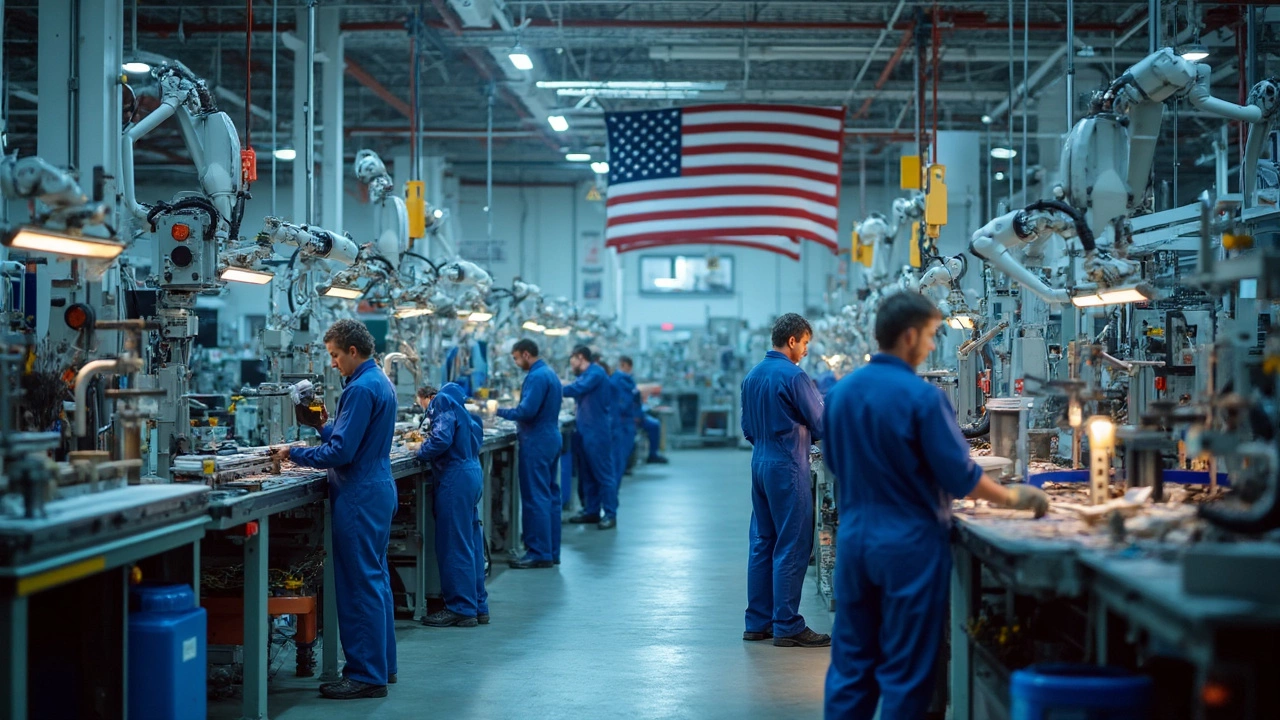- Will Companies Pay for Ideas? Manufacturing Startup Insights Jun 3, 2025
- The Truth About Zero Waste Countries: Can Any Nation Claim Zero Landfills? Jul 3, 2025
- Food Processing Levels: The 4 Main Stages Explained May 11, 2025
- Textile Industry Outlook in India for 2024: Key Trends and Insights Feb 12, 2025
- The 5 Essential Stages of Food Processing Explained Oct 12, 2025
US Manufacturing: What’s Driving the Industry in 2025
America’s factories are humming again, but the way they work has changed a lot. From high‑tech robotics on the shop floor to greener production methods, today’s manufacturers are juggling speed, cost, and sustainability. If you’re wondering why these shifts matter to you – whether you’re a job‑seeker, a supplier, or just curious – keep reading. You’ll get a quick, practical look at what’s really happening in US manufacturing right now.
Why Manufacturing Touches Your Everyday Life
Manufacturing isn’t just big plants in the Midwest; it’s the source of the goods you use every day. Every car you drive, every smartphone you swipe, even the steel beams that hold up your office building – they all start in a factory. In 2025, the sector supports about 12 % of US jobs, and many of those roles now need digital skills alongside traditional trade knowledge. That means better wages for workers who can handle data, and more opportunities for people who love hands‑on work.
Supply‑chain resilience is another hot topic. After the pandemic, companies realized they can’t depend on a single source for critical parts. That’s why you’ll see more “near‑shoring” – factories moving closer to home – and more partnerships with local suppliers. The result? Shorter delivery times, lower shipping costs, and fewer disruptions that can push product prices up.
Key Challenges and How Companies Are Responding
Rising energy costs are a big headache for manufacturers, especially those that run big furnaces or heavy‑duty equipment. To combat this, many plants are investing in renewable energy, such as solar arrays on rooftops or on‑site wind turbines. The payoff isn’t just lower bills; it also helps meet stricter environmental regulations and appeals to customers who care about the carbon footprint of what they buy.
Talent shortages remain another pain point. The older generation of skilled workers is retiring faster than new talent is entering the field. In response, firms are teaming up with community colleges and offering apprenticeship programs that blend classroom learning with real‑world experience. Some even pay for certifications to fast‑track workers into higher‑pay roles.
Technology is the glue that holds these solutions together. Automation, AI‑driven quality checks, and digital twins – virtual replicas of production lines – let factories spot problems before they happen. For example, a leading US steel supplier uses AI to predict equipment wear, cutting downtime by 20 % and saving millions in lost production.
Overall, US manufacturing is pulling a lot of levers at once: greener power, smarter people, and sharper tech. The blend of these forces is reshaping the sector, creating new jobs, and keeping America’s industrial base competitive on the world stage.
If you’re thinking about a career in manufacturing, consider roles that blend mechanical know‑how with data analysis – they’re in high demand and pay well. If you’re a business owner, look at ways to partner with local suppliers and invest in renewable energy to stay ahead of cost spikes. And if you’re just curious, keep an eye on the news about AI‑enabled factories; they’re the next big thing pushing US manufacturing forward.
US Manufacturing Rankings: Where Do They Stand?
- Aarav Sekhar
- Mar 20, 2025
Curious about where the US stands in the global manufacturing arena? This article digs into America's ranking in the manufacturing sector, exploring key players, technological innovations, and challenges the industry faces. Discover interesting facts and tips about the companies leading the charge, the role of technology, and how the US competes globally. A must-read for anyone wanting to understand the intricacies of US manufacturing.
